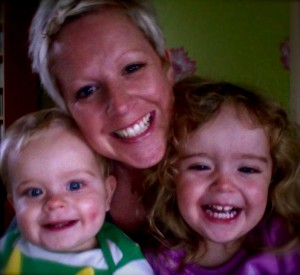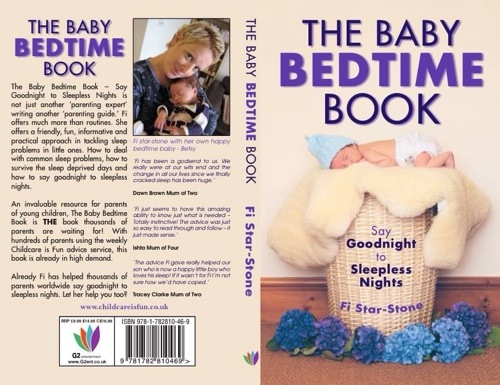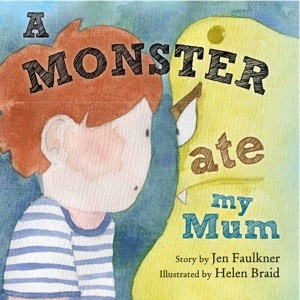Time out works… If used properly!
 Time-out, you either use it or you don’t.
Time-out, you either use it or you don’t.
I believe in live and let live – to choose what parenting techniques you want to use and to stick to them but to not judge others who don’t use the same as you, or suggest they are bad parents for not doing so.
I have read so much research over the past 20 years about using time out and I continue read research so that I’m always up-to-date with my professional advice and guidance. I’m not one of those ‘blinkered’ professionals that thinks it’s my way or the highway.
After all of the research I have read (and there are lots!) I believe not one piece of research has firmly concluded that using time out (properly) has an ill effect on children.
There are may ideas of how to use time out – and I feel some techniques give the time out bad press and because of this many are unwilling to see the positive side of such techniques. However, as with any parenting ideas, (you can read my views on smacking here,) techniques and advice, at the end of the day it is you as a parent that decides what is best for you and your child.
The topic of time-out prompted me to ask my followers on Twitter if they used the technique and the response was pretty amazing. Everyone (and there were lots) who replied, admitted to using time out and that it worked well when used properly.
In my 20 year career working with children I have always used ‘time out’ when it has been needed. The times I use it are usually when a child is hurting another or could potentially harm themselves.
Why use time out?
When a child has lost control, are fighting, hurting or biting another child it is important to remove them from that situation so they can calm down and think about what has happened/what they have done and how they are feeling.
Time out doesn’t necesarily mean leaving a child on their own – you can sit with them an talk about their behaviour, even cuddle them if they are very upset. It’s simply about removing them from the situation so they are aware that that particular behaviour is unacceptable. Time-out is designed to stop unwanted behavior and to give your child some time and space from the situation and for older children, to think about that behaviour. Sometimes having time out from the situation can decrease frustration, anger, temper and all the other emotions that come bubbling.
I have to stress here that it’s VERY important when using time out, to explain what you are doing, why you are doing it, and how long they are going to be there. Putting a child on a *’naughty step’ with no explanation and fighting with them to sit there isn’t ideal and isn’t going to help them understand their behaviour.
I have many parents contacting me regarding the naughty step! Lots say they can’t get their child to sit on it and have long battles. The problem is in the question- why use a step? If your child refuses to sit on the step because they are angry, it’s ok! As long as you have removed them from the situation they were in, you have achieved time out!
My idea of ‘time out’ isn’t ‘super nanny’ Jo Frost’s idea of shouting at a child and insiting they confess all their sins while sitting there for ‘a minute for each year they are alive’ – No! My idea is that time out is exactly that – ‘time out’ from a situation that has harmed another or potentially harmed the child or when their emotions have run so high they need time away from a situation to calm down.
 I have two toddlers aged 1 1/2 years and 2 1/2 years. I very rarely need to use time out as tone of voice is usually enough, as is avoidance – a great technique into avoiding conflict. If you see a situation arising that’s going to lead to trouble (with my two its usually fighting over a toy) get in there quick and distract! Of course, as busy parents it’s not always possible to use avoidance techniques, but when used they can avoid ‘time out’ which should really only be used as a final straw.
I have two toddlers aged 1 1/2 years and 2 1/2 years. I very rarely need to use time out as tone of voice is usually enough, as is avoidance – a great technique into avoiding conflict. If you see a situation arising that’s going to lead to trouble (with my two its usually fighting over a toy) get in there quick and distract! Of course, as busy parents it’s not always possible to use avoidance techniques, but when used they can avoid ‘time out’ which should really only be used as a final straw.
Time out Tips…
1. Only use Time out as a last resort. Try and talk through situations first, or use avoidance techniques. I use time out if a child is endangering themselves or others.
2. Think of a space in your home where time out can be used. Avoid bedrooms – it’s not good to make sleeping places negative spaces! (A little rhyme for you there!)
3. ALWAYS explain what you are doing and why. Talk about the time out place before you use it. Talk them through the first time you use it and never leave your child crying there for long periods of time. This defeats the whole point of time out.
4. ALWAYS get your littly to apologise to the person they have hurt. This encourages understanding feelings of others and empathy.
5.Don’t use a timer. A minute for each age is silly. Your child is 2 one day and 3 the next – that’s a whole minute more and makes no difference whatsoever! It’s not necessary. Use your judgment on what you think will work best for your child. I find sometimes even 30 seconds is enough to make them understand what they did was wrong.
6. Whatever time out technique you decide to use, ensure you do it the same way each time so the process is predictable and understandable to your child.
7. ALWAYS reassure and cuddle after time out has been used and don’t keep going over their negative behaviour or reminding them of what they did.
I use time out because I want my children to learn responsibility, sensitivity, empathy, and sharing – very important life skills that help them succeed in life and develop healthy relationships with others, and often to achieve this time out means getting them away from the situation, and talking through what has happened.
The point in educating littlies about their negative behaviour is that we want them to eventually learn how to stop themselves from using those negative behaviors and find a better way for themselves.
It is hard work raising children, but it’s also a wonderful, rewarding and fun experience! Lets live and let live mums and dads! Share your experiences with one another and support one anothers choices. I’d love to hear your thoughts on time out – do you use it? Are you against such techniques – tell me your thoughts in the comments box below.
Need some help?
If you are struggling to cope with your littlies behaviour I offer a FREE, confidential parenting advice service that is used by on average, 150 parents a week!
My advice is based on 20 years experience and a degree in childhood and youth studies, a nursery nursing diploma and a diploma in Childhood studies, and the best experience of all? A mum to two feisty toddlers that enjoy nothing more than drawing on walls, fighting over toys and giving mr lots of kisses!
*’naughty step’ photo posed for by my two littlies!
 Time-out, you either use it or you don’t.
Time-out, you either use it or you don’t. I have two toddlers aged 1 1/2 years and 2 1/2 years. I very rarely need to use time out as tone of voice is usually enough, as is avoidance – a great technique into avoiding conflict. If you see a situation arising that’s going to lead to trouble (with my two its usually fighting over a toy) get in there quick and distract! Of course, as busy parents it’s not always possible to use avoidance techniques, but when used they can avoid ‘time out’ which should really only be used as a final straw.
I have two toddlers aged 1 1/2 years and 2 1/2 years. I very rarely need to use time out as tone of voice is usually enough, as is avoidance – a great technique into avoiding conflict. If you see a situation arising that’s going to lead to trouble (with my two its usually fighting over a toy) get in there quick and distract! Of course, as busy parents it’s not always possible to use avoidance techniques, but when used they can avoid ‘time out’ which should really only be used as a final straw.





FionaCambouropoulos (@coombemill)
Fi everything you say here makes perfect sense, I can’t imagine anyone not agreeing with time out as you explain it here. I have always used it with my 6, works better for some than others, but that is just because every child is individual. Thanks for sharing